Functions of Herbal Ingredients
The following functions of each individual ingredient were translated from several Chinese herbal encyclopedias or obtained from other sources for reference. Credits go to the original sources of reference. JuneLab® does not make any claim implicitly or explicitly regarding the medical effects of these ingredients.
References:
1. COMPENDIUM OF MATERIA MEDICA
2. China Surfactant Detergent & Cosmetics V01.35 No.1 Feb.2O05
3. Chinese Wild Plant Resources Vo1.22 No.4 Aug.2003
4. Alternative Nature Online Herbal
 Tibetan Saffron : The saffron crocus extraction, safranine, stimulates the cuticular layer of the skin to produce hyaluronic acid (HA) to delay the skin's aging process and reduce spots and wrinkles. It promotes blood circulation, increasing the supply of blood oxygen to the skin, for a natural, clear complexion. It helps the body secrete hormones to enhance the skin's appearance by eliminating spotty skin discoloring caused by endocrine imbalances. It also helps regulate fat metabolism and minimize thick pores. It has a sterilization function that can clean and brighten skin. The polysaccharides in saffron crocus can activate enzymes to promote macrophage action, a factor in immune function, to enhance the resistance of skin to external damages, including damages from ultraviolet rays.
Tibetan Saffron : The saffron crocus extraction, safranine, stimulates the cuticular layer of the skin to produce hyaluronic acid (HA) to delay the skin's aging process and reduce spots and wrinkles. It promotes blood circulation, increasing the supply of blood oxygen to the skin, for a natural, clear complexion. It helps the body secrete hormones to enhance the skin's appearance by eliminating spotty skin discoloring caused by endocrine imbalances. It also helps regulate fat metabolism and minimize thick pores. It has a sterilization function that can clean and brighten skin. The polysaccharides in saffron crocus can activate enzymes to promote macrophage action, a factor in immune function, to enhance the resistance of skin to external damages, including damages from ultraviolet rays.
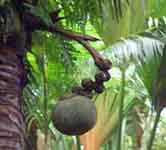 Seychelles Coco-de-Mer : Coco-de-Mer preserves the skin's moisture and provides nutrition to the skin. It is especially suitable for dry and rough skin. Coco-de-Mer nutrients feed and brighten the skin. It contains amino acids, including seven types that are essential to the human body. The amino acids strengthen the skin cells, greatly enhancing the flexibility and health of the skin.
Seychelles Coco-de-Mer : Coco-de-Mer preserves the skin's moisture and provides nutrition to the skin. It is especially suitable for dry and rough skin. Coco-de-Mer nutrients feed and brighten the skin. It contains amino acids, including seven types that are essential to the human body. The amino acids strengthen the skin cells, greatly enhancing the flexibility and health of the skin.
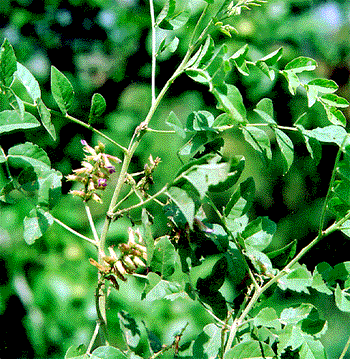 Radix Glycyrrhizae : Radix glycyrrhizae adjusts skin's immune function. It removes cosmetics and other external factors that can harm the skin’s natural protective abilities.
Radix Glycyrrhizae : Radix glycyrrhizae adjusts skin's immune function. It removes cosmetics and other external factors that can harm the skin’s natural protective abilities.
 Honeysuckle : Honeysuckle strengthens and tones the skin, making it resistant to harm from external factors. As it closes the pores, it also suppresses sebum secretion and enhances oxidation resistance.
Honeysuckle : Honeysuckle strengthens and tones the skin, making it resistant to harm from external factors. As it closes the pores, it also suppresses sebum secretion and enhances oxidation resistance.
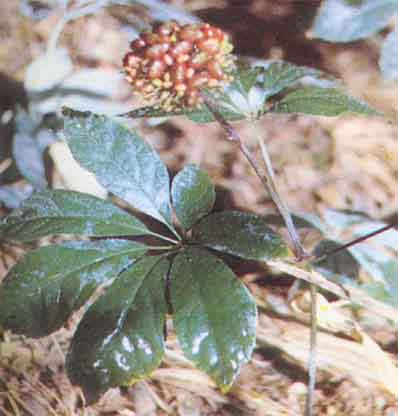 Radix Notoginseng : Radix Notoginseng expands the blood vessels to improve blood circulation. It improves skin metabolism and strengthens the skin’s immune functions. It also mediates melanin deposits enabling healthy, normal pigmentation.
Radix Notoginseng : Radix Notoginseng expands the blood vessels to improve blood circulation. It improves skin metabolism and strengthens the skin’s immune functions. It also mediates melanin deposits enabling healthy, normal pigmentation.
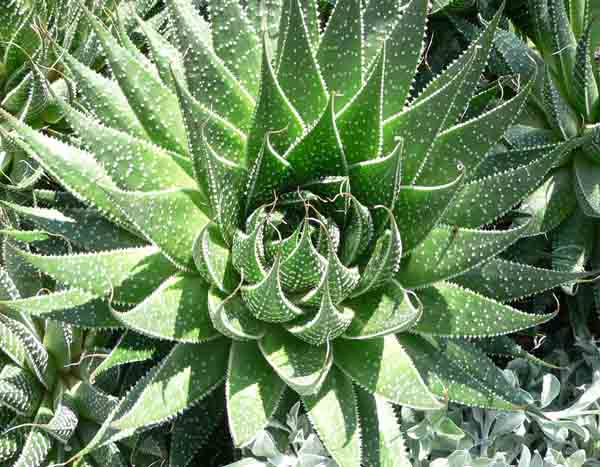 Aloe : Aloe absorbs ultraviolet rays and guards against exposure to the sun. The natural fatty acids and vitamin E in the aloe promptly repair the skin after sun or wind exposure. Aloe limits free radical function and guards against the appearance of aging. It cleanses the skin and prevents allergic reactions.
Aloe : Aloe absorbs ultraviolet rays and guards against exposure to the sun. The natural fatty acids and vitamin E in the aloe promptly repair the skin after sun or wind exposure. Aloe limits free radical function and guards against the appearance of aging. It cleanses the skin and prevents allergic reactions.
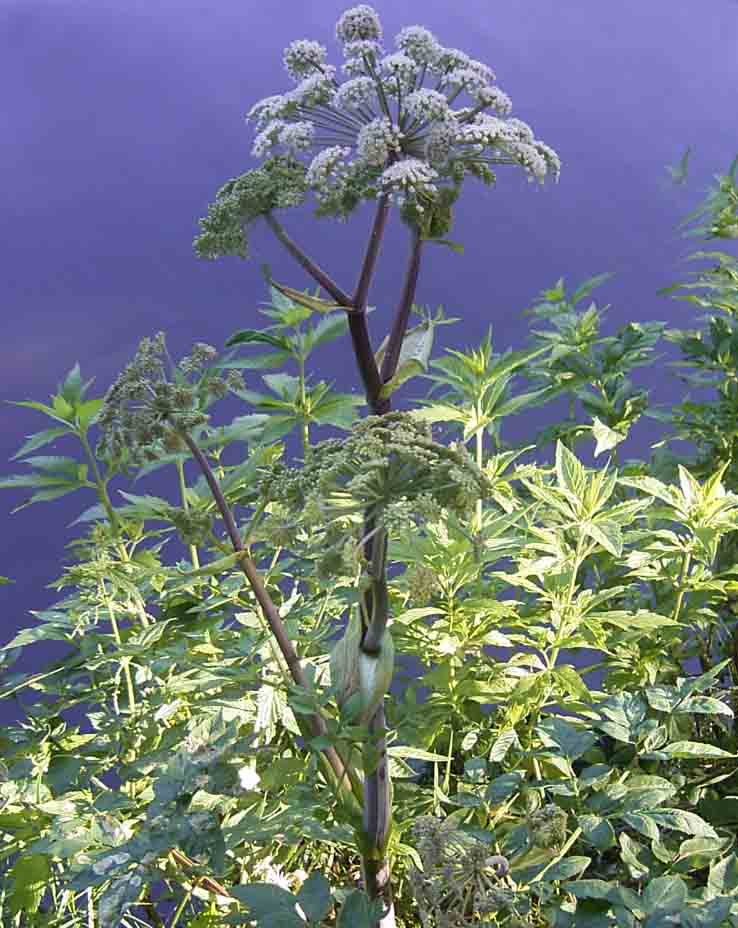 Angelica : An ancient blood circulation tonic, angelica improves skin tone by increasing blood circulation and blood supply. It supports human metabolism and endocrine function, and may suppress melanin production. It promotes healthy, glossy, moisturized skin.
Angelica : An ancient blood circulation tonic, angelica improves skin tone by increasing blood circulation and blood supply. It supports human metabolism and endocrine function, and may suppress melanin production. It promotes healthy, glossy, moisturized skin.
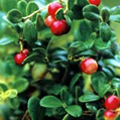 Arbutin: Arbutin is a hydroquinone derivative extracted from the leaves of bearberry shrub, cranberry, blueberry, and most types of pears. Because of arbutin's hydroquinone content, it has melanin-inhibiting properties.
Arbutin: Arbutin is a hydroquinone derivative extracted from the leaves of bearberry shrub, cranberry, blueberry, and most types of pears. Because of arbutin's hydroquinone content, it has melanin-inhibiting properties.
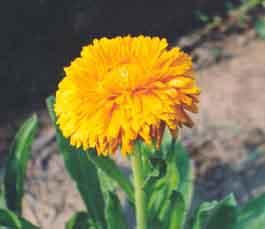 Japonica: Japonica extract promotes the formation of collagen. For topical applications, it may preserve the skin's moisture, prevent aging and protecting skin from ultraviolet radiation.
Japonica extracts promote blood coagulation and reduce capillary exudation. Japonica is an effective herbal medicine in treating many types of skin diseases and bodily damage, like leg ulcers, hemorrhoids, varicosity, anal fissure, mastitis, fat cysts, impetigo, flesh wounds, extravasation, scarring, skin infections and burns.
Japonica: Japonica extract promotes the formation of collagen. For topical applications, it may preserve the skin's moisture, prevent aging and protecting skin from ultraviolet radiation.
Japonica extracts promote blood coagulation and reduce capillary exudation. Japonica is an effective herbal medicine in treating many types of skin diseases and bodily damage, like leg ulcers, hemorrhoids, varicosity, anal fissure, mastitis, fat cysts, impetigo, flesh wounds, extravasation, scarring, skin infections and burns.
 Borage Seeds Oil: Borage makes an excellent facial cream for improving very dry, sensitive skin. Borage seed oil is
one of the richest sources of gamma linolenic acid, and it also contains important vitamins and
minerals. Borage seed oil is typically used in high-end cosmetic formulations to nourish and
hydrate the skin. Use Borage oil in facial blends for maturing
skin or in blends for damaged skin
where regeneration of new skin cells is needed.
Borage Seeds Oil: Borage makes an excellent facial cream for improving very dry, sensitive skin. Borage seed oil is
one of the richest sources of gamma linolenic acid, and it also contains important vitamins and
minerals. Borage seed oil is typically used in high-end cosmetic formulations to nourish and
hydrate the skin. Use Borage oil in facial blends for maturing
skin or in blends for damaged skin
where regeneration of new skin cells is needed.
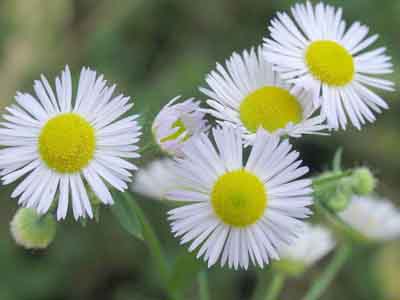 Wild Chrysanthemum: Wild chrysanthemum helps the skin resist oxidation, enhances organism immunity, and scavenges free radicals, which are harmful to skin cells.
Wild Chrysanthemum: Wild chrysanthemum helps the skin resist oxidation, enhances organism immunity, and scavenges free radicals, which are harmful to skin cells.
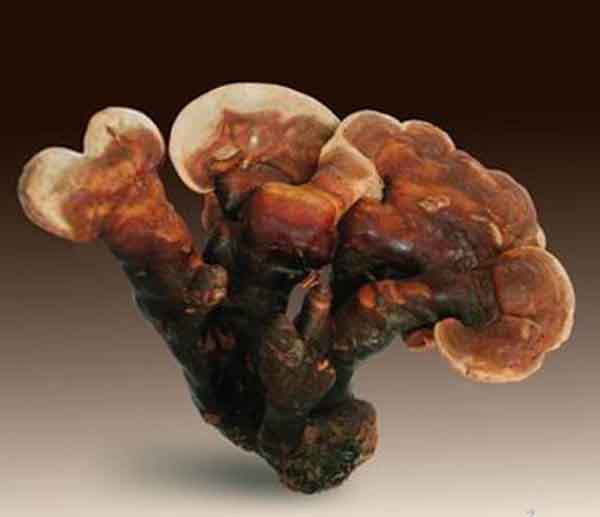 Lucid Ganoderma: Lucid Ganoderma maintains and adjusts skin moisture content and restores skin elasticity. It promotes skin cell renewal, including circulation and normal cell biological activity. It may guard against ultraviolet ray damage.
Lucid Ganoderma: Lucid Ganoderma maintains and adjusts skin moisture content and restores skin elasticity. It promotes skin cell renewal, including circulation and normal cell biological activity. It may guard against ultraviolet ray damage.
 Calendula: Calendula salve can be used for treating minor cuts and abrasions, chapped lips, and diaper rash. Calendula tea
has been used as mouthwash for gum and tooth infections, a gargle for sore throats and tonsillitis, and a bath
for genital inflammation or hemorrhoids. It can also be used to treat bladder infections or stomach ulcers.
Calendula: Calendula salve can be used for treating minor cuts and abrasions, chapped lips, and diaper rash. Calendula tea
has been used as mouthwash for gum and tooth infections, a gargle for sore throats and tonsillitis, and a bath
for genital inflammation or hemorrhoids. It can also be used to treat bladder infections or stomach ulcers.
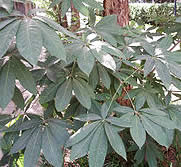 Aesculus Chinensis (Chinese Horse-chestnut):
Aesculus Chinensis (Chinese Horse-chestnut):
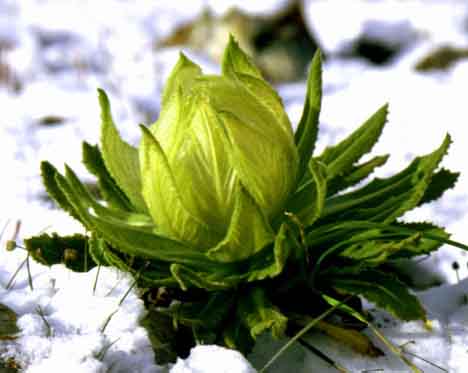 Tianshan Snow Lotus : Tianshan Snow Lotus contains nicotinamide adenine dinucleotide, a cellular co-enzyme that creates the energy molecule that powers the muscles, heart, brain, nerves and cell repair. Its anti-peroxide capability delays the skin's aging process by eliminating the ultra oxygen anion free radicals. It includes multi-hydroxyl flavone compounds for anti-inflammation and for reducing the permeability of the blood vessels. It improves the skin's micro-cycle by accelerating skin metabolism. This repairs skin texture to restore natural freshness and elasticity. It has a function similar to estrogen, in that it balances the action of the endocrine glands. This quality controls freckles, liver spots, dark spots, and wrinkles. It makes skin look fresher, clearer, and more radiant. It contains elements that cleanse and purify the skin. The stamen and pistil of the flower include rich vitamins. It can also screen ultraviolet rays, to guard against exposure to the sun.
Tianshan Snow Lotus : Tianshan Snow Lotus contains nicotinamide adenine dinucleotide, a cellular co-enzyme that creates the energy molecule that powers the muscles, heart, brain, nerves and cell repair. Its anti-peroxide capability delays the skin's aging process by eliminating the ultra oxygen anion free radicals. It includes multi-hydroxyl flavone compounds for anti-inflammation and for reducing the permeability of the blood vessels. It improves the skin's micro-cycle by accelerating skin metabolism. This repairs skin texture to restore natural freshness and elasticity. It has a function similar to estrogen, in that it balances the action of the endocrine glands. This quality controls freckles, liver spots, dark spots, and wrinkles. It makes skin look fresher, clearer, and more radiant. It contains elements that cleanse and purify the skin. The stamen and pistil of the flower include rich vitamins. It can also screen ultraviolet rays, to guard against exposure to the sun.
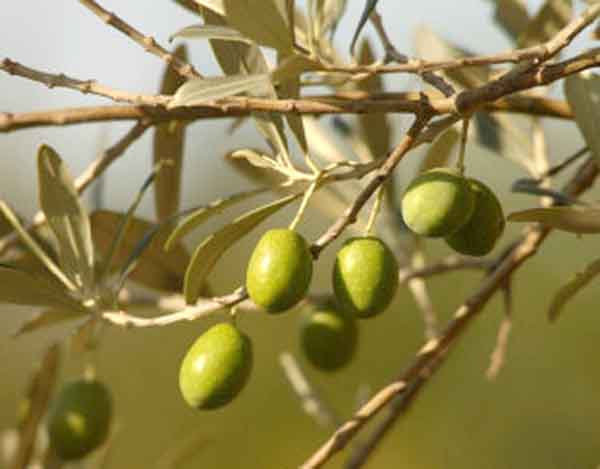 Olive Leaf : Olive leaf extracts have a number of applications in cosmetics: From their traditional use as a cicatrizing agent, they can be incorporated into a formulation for skin damage by UV radiation or for assisting with wound healing. This function is explained by the presence of flavonoids and oleanolic acid, which stimulate the components of the connective tissue and regularize the tissue, thereby boosting the health of the skin. The secoiridoid derivatives (oleuropeoside) in olive leaves are responsible for the vaso-dilating and relaxing properties of their extracts.
Olive Leaf : Olive leaf extracts have a number of applications in cosmetics: From their traditional use as a cicatrizing agent, they can be incorporated into a formulation for skin damage by UV radiation or for assisting with wound healing. This function is explained by the presence of flavonoids and oleanolic acid, which stimulate the components of the connective tissue and regularize the tissue, thereby boosting the health of the skin. The secoiridoid derivatives (oleuropeoside) in olive leaves are responsible for the vaso-dilating and relaxing properties of their extracts.
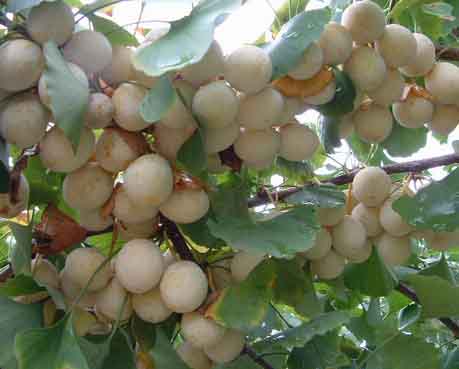 Ginkgo Leaf : Ginkgo leaf helps skin resist oxidation, one of the main factors in aging. It does this by guarding skin against damage from exposure to the sun. Ginkgo also prevents skin's allergic reaction to certain light rays, because it slows oxidation. In ginkgo leaf extraction, the total ginkgo lactones are withdrawn. These limit the harmful effects of oxidized free radicals while strengthening the skin’s natural immune system. Ginkgo promotes blood circulation and increases healthy blood supply and cell metabolism. This, in turn, speeds up skin cell renewal and increases the skin’s gloss and elasticity.
Ginkgo Leaf : Ginkgo leaf helps skin resist oxidation, one of the main factors in aging. It does this by guarding skin against damage from exposure to the sun. Ginkgo also prevents skin's allergic reaction to certain light rays, because it slows oxidation. In ginkgo leaf extraction, the total ginkgo lactones are withdrawn. These limit the harmful effects of oxidized free radicals while strengthening the skin’s natural immune system. Ginkgo promotes blood circulation and increases healthy blood supply and cell metabolism. This, in turn, speeds up skin cell renewal and increases the skin’s gloss and elasticity.
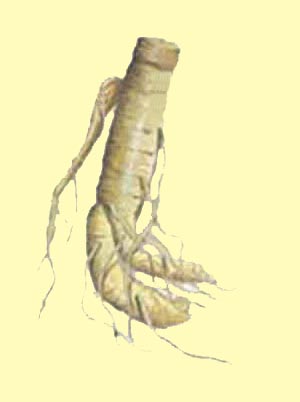 Ginseng : Ginseng includes many kinds of nutritional ingredients, such as glucosides and polysaccharides, and many kinds of amino acids, vitamins, and trace elements. It increases nutrients going into the cells, improving the skin’s health and moisturizing the skin. It helps to improve blood circulation to the skin, strengthening skin elasticity and reducing the signs of aging. Ginseng provides for the skin's water balance, preventing dehydration and promoting moist, glossy skin.
Ginseng : Ginseng includes many kinds of nutritional ingredients, such as glucosides and polysaccharides, and many kinds of amino acids, vitamins, and trace elements. It increases nutrients going into the cells, improving the skin’s health and moisturizing the skin. It helps to improve blood circulation to the skin, strengthening skin elasticity and reducing the signs of aging. Ginseng provides for the skin's water balance, preventing dehydration and promoting moist, glossy skin.
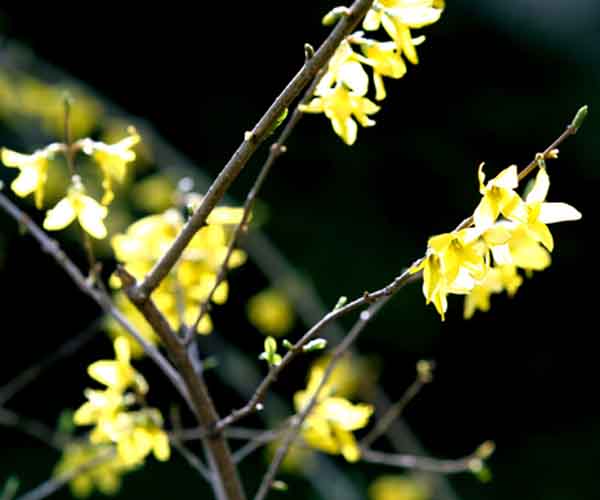 Weeping Forsythia : Weeping Forsythia promotes cell regeneration and repairs immune function.
Weeping Forsythia : Weeping Forsythia promotes cell regeneration and repairs immune function.
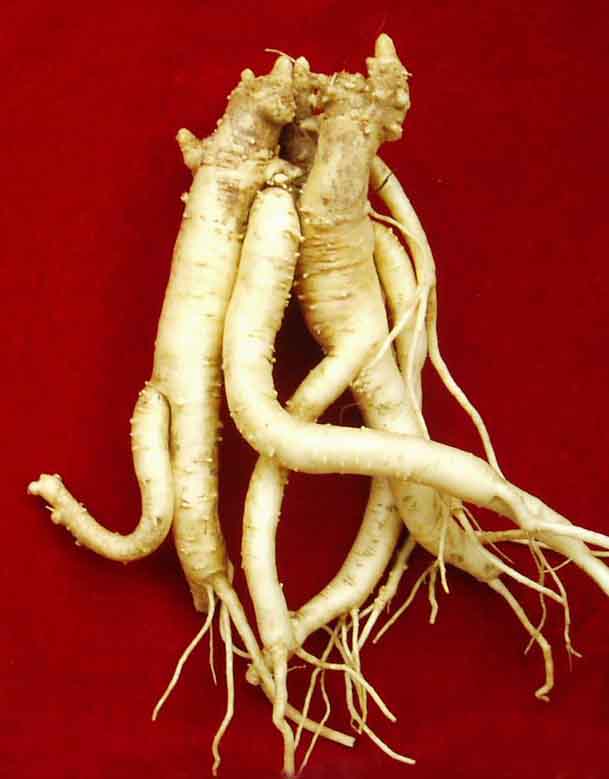 Radix Scutellariae : Radix Scutellariae includes many kinds of amino acids that enhance skin cell immune function. It also normalizes pigmentation.
Radix Scutellariae : Radix Scutellariae includes many kinds of amino acids that enhance skin cell immune function. It also normalizes pigmentation.
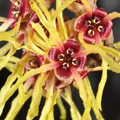 Hamamelis Japonica: Hamamelis Japonica extract has anti-bacterial, analgesic, anti-inflammatory and anti-oxidant functions for the skin. It also
reduces damage caused by ultraviolet radiation from the sun.
Hamamelis Japonica: Hamamelis Japonica extract has anti-bacterial, analgesic, anti-inflammatory and anti-oxidant functions for the skin. It also
reduces damage caused by ultraviolet radiation from the sun.
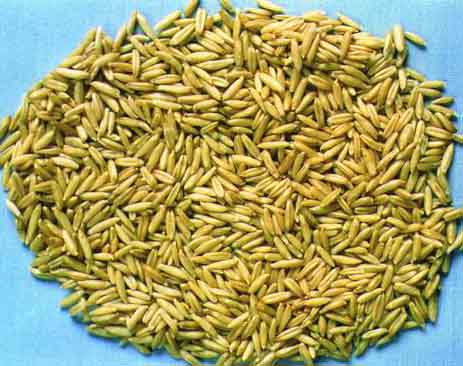 Oats: Extract of oats, Vitamin E, flavanone apperception and non-flavanone phenol compound, exhibits significant oxidation resistance function. In addition, it contains cinnamon acids derivative, which may suppress the low density lipoprotein oxidation. The beta glucose contained in oats, due to its unique linear chain molecular structure, can pass through the intercellular matrix and deeply penetrate and cleanse the skin. Oats beta glucose has effective anti-wrinkle and anti-aging characteristics. It can tighten and smooth fine lines, improve skin texture, and preserve long-term moisture. It enhances skin immunity to viruses and skin’s resistance to external irritants. It is also effective in curing wounds and reducing scar visibility.
Oats contain the highest content of amino acid among cereals, which can preserve skin moisture, especially for dry skin. Silicon dioxide may also reduce or cure many skin diseases.
Oats: Extract of oats, Vitamin E, flavanone apperception and non-flavanone phenol compound, exhibits significant oxidation resistance function. In addition, it contains cinnamon acids derivative, which may suppress the low density lipoprotein oxidation. The beta glucose contained in oats, due to its unique linear chain molecular structure, can pass through the intercellular matrix and deeply penetrate and cleanse the skin. Oats beta glucose has effective anti-wrinkle and anti-aging characteristics. It can tighten and smooth fine lines, improve skin texture, and preserve long-term moisture. It enhances skin immunity to viruses and skin’s resistance to external irritants. It is also effective in curing wounds and reducing scar visibility.
Oats contain the highest content of amino acid among cereals, which can preserve skin moisture, especially for dry skin. Silicon dioxide may also reduce or cure many skin diseases.
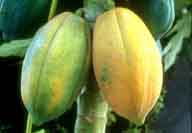 Papaya: Papaya proteinase is a plant enzyme that supports the body’s protein synthesis. It enhances the skin’s ability to form new cells, giving it a luminous, healthy glow. Papaya proteinase participates in skin metabolism, increasing collagen and elasticity, while it moisturizes and lubricates the skin. It can also accelerate the skin pigment catabolism, lightening pigment spots and clarifying the skin.
Papaya: Papaya proteinase is a plant enzyme that supports the body’s protein synthesis. It enhances the skin’s ability to form new cells, giving it a luminous, healthy glow. Papaya proteinase participates in skin metabolism, increasing collagen and elasticity, while it moisturizes and lubricates the skin. It can also accelerate the skin pigment catabolism, lightening pigment spots and clarifying the skin.
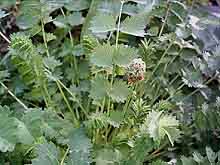 Radix Sanguisorbae: Radix Sanguisorbae includes rich nutrients that aid the biological activity of healthy skin cells.
Radix Sanguisorbae: Radix Sanguisorbae includes rich nutrients that aid the biological activity of healthy skin cells.
 Chamomile: The extract of chamomile flowers is used as an ingredient in hair shampoo. It can be added to cosmetics as an anti-allergic agent. The chamomile flowers are sometimes added to a salve for use on hemorrhoids, wounds, skin inflammations, sunburn, and other burns. The dry flowers can be added to a bath to help relax tired, achy muscles and feet, and
soften the skin.
Chamomile: The extract of chamomile flowers is used as an ingredient in hair shampoo. It can be added to cosmetics as an anti-allergic agent. The chamomile flowers are sometimes added to a salve for use on hemorrhoids, wounds, skin inflammations, sunburn, and other burns. The dry flowers can be added to a bath to help relax tired, achy muscles and feet, and
soften the skin.
 Algae: With numerous active compounds, the algae polymer combines with skin protein to form a natural moisturizing lotion that softens the skin. The seaweed contains iodine, which has a sterilization function, and is a good skin-protecting agent. Algae accelerates skin metabolism and promotes the fatty acid metabolism, which rejuvenates skin cells. This seaweed includes protein, collagen, cellulose, multivitamins and minerals, enhancing skin health and vitality.
Algae: With numerous active compounds, the algae polymer combines with skin protein to form a natural moisturizing lotion that softens the skin. The seaweed contains iodine, which has a sterilization function, and is a good skin-protecting agent. Algae accelerates skin metabolism and promotes the fatty acid metabolism, which rejuvenates skin cells. This seaweed includes protein, collagen, cellulose, multivitamins and minerals, enhancing skin health and vitality.

